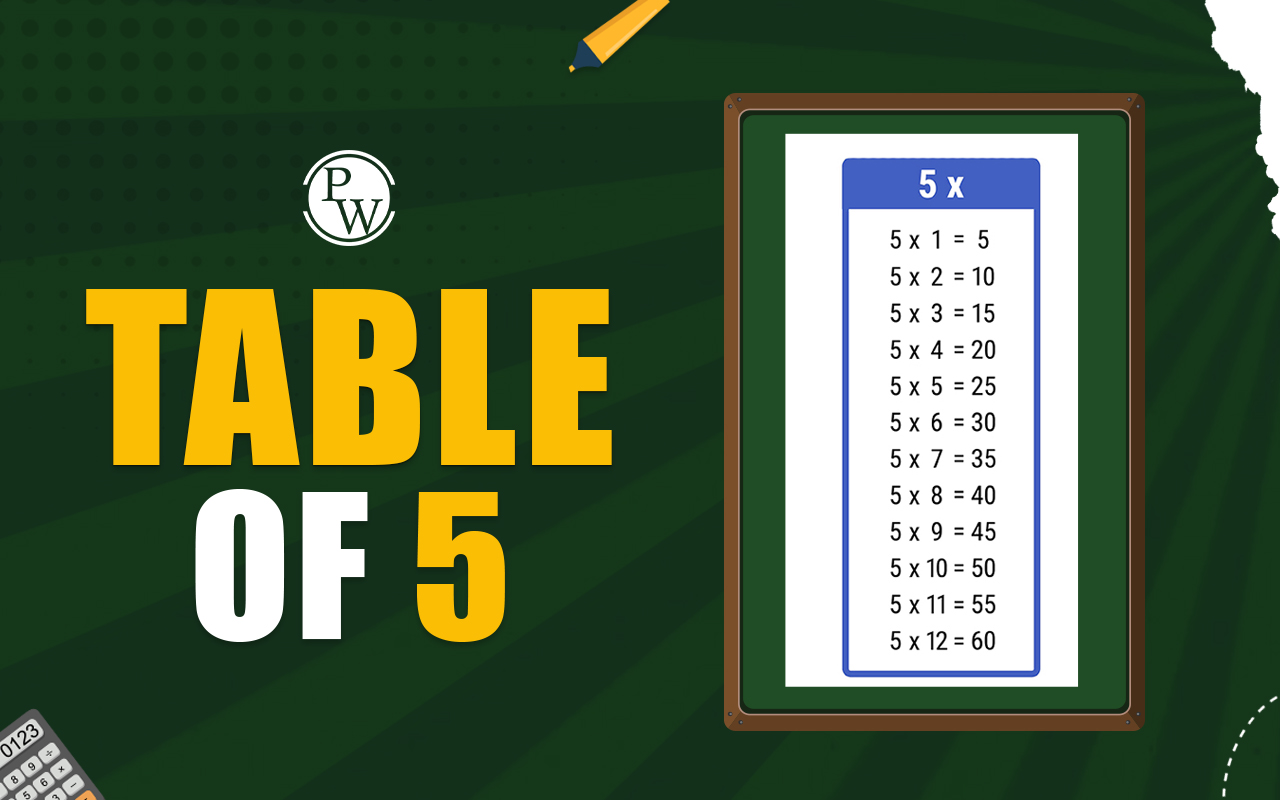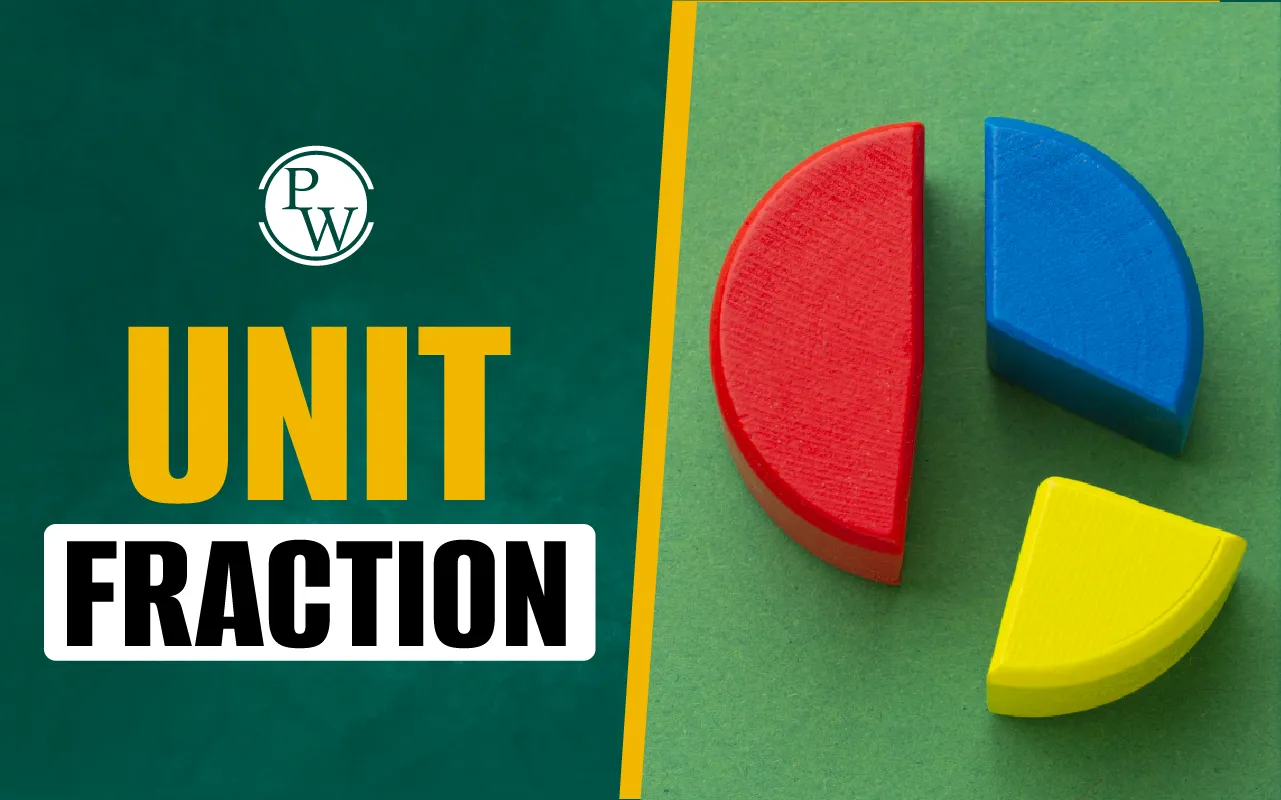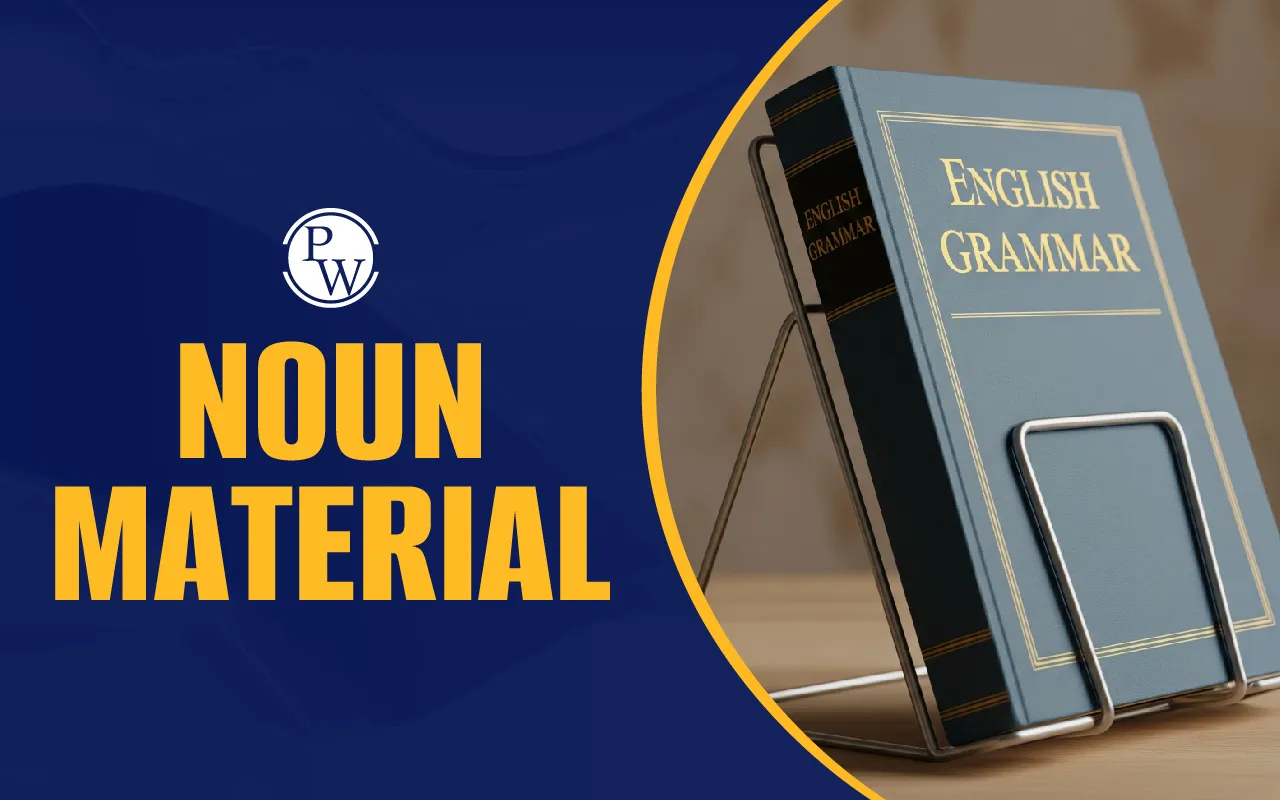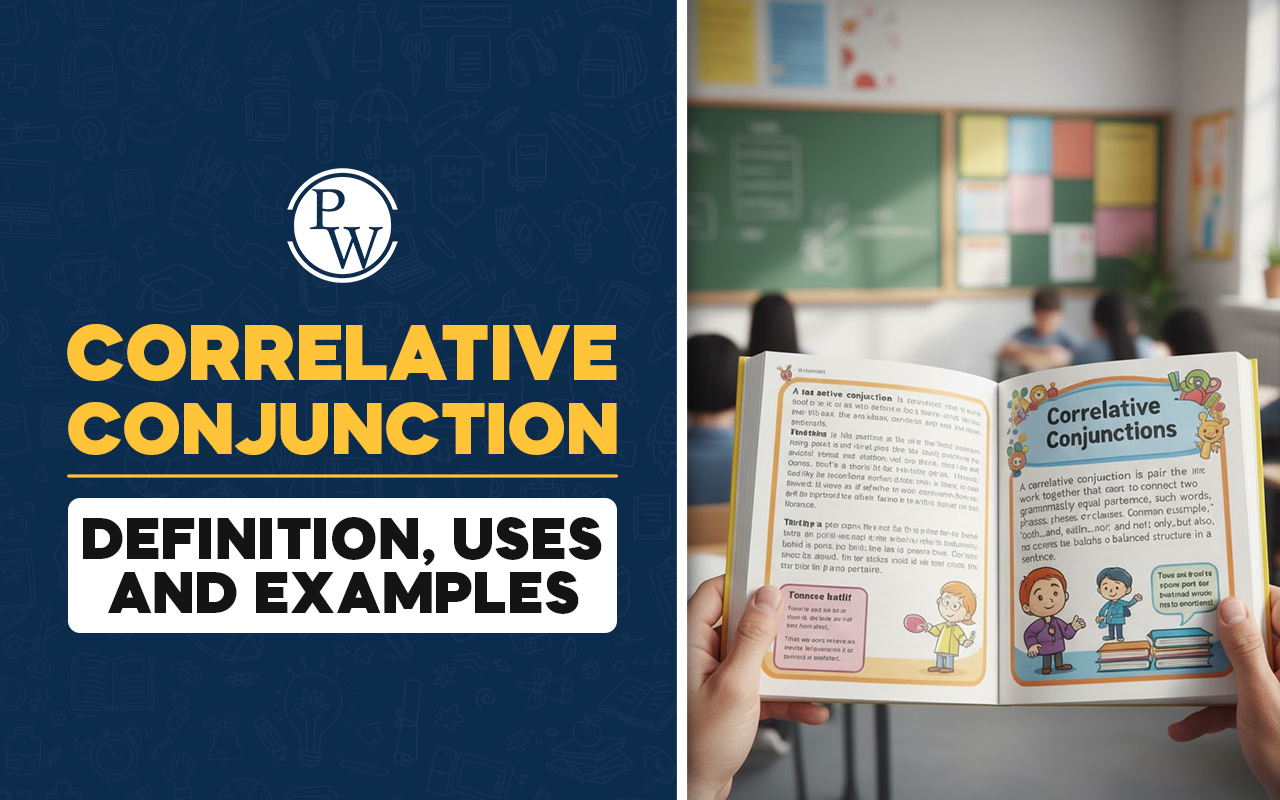

Table 5: Multiplication tables are like secret tools that make solving math problems quicker and easier. Instead of adding the same number again and again, multiplication helps you get the answer in just one step!
Among all the tables, the 5-times table is one of the most fun and simple to learn. It follows a neat pattern; every answer ends with 0 or 5, which makes it easy to remember. Whether you’re figuring out how many minutes have passed on a clock, sharing snacks with friends, or counting toys in groups, the 5-times table makes everything faster and easier.What is the Table of 5?
The Table of 5 is a way to multiply numbers by adding 5 repeatedly . It’s like a shortcut to counting in bundles of 5. This table helps us multiply faster without adding each time. For example:- 5 × 1 = 5 (One group of 5)
- 5 × 2 = 10 (Two groups of 5: 5 + 5)
- 5 × 3 = 15 (Three groups of 5: 5 + 5 + 5)
- 5 × 4 = 20 (Four groups of 5: 5 + 5 + 5 + 5)
- 5 × 5 = 25 (Five groups of 5: 5 + 5 + 5 + 5 + 5)
- 5 × 6 = 30 (Six groups of 5: 5 + 5 + 5 + 5 + 5 + 5)
- 5 × 7 = 35 (Seven groups of 5: 5 + 5 + 5 + 5 + 5 + 5 + 5)
- 5 × 8 = 40 (Eight groups of 5: 5 + 5 + 5 + 5 + 5 + 5 + 5 + 5)
- 5 × 9 = 45 (Nine groups of 5: 5 + 5 + 5 + 5 + 5 + 5 + 5 + 5 + 5)
- 5 × 10 = 50 (Ten groups of 5: 5 + 5 + 5 + 5 + 5 + 5 + 5 + 5 + 5 + 5)
Why Should Kids Learn the Table of 5?
Learning the Table of 5 is very helpful for kids! Here's why: Solve Math Faster: Instead of adding 5 multiple times, kids can multiply and get the answer right away. Example: Instead of 5 + 5 + 5, just do 5 × 3 = 15. Read Clocks Easily: The minute hand on a clock moves in 5-minute steps. Knowing this table helps kids tell the time more easily. Example: From 12:00 to 12:15 is 3 intervals of 5 × 3 = 15 minutes. Learn Division and Fractions: Knowing the Table of 5 helps kids divide numbers and understand fractions. Example: If 5 × 4 = 20, then 20 ÷ 5 = 4 or 20 ÷ 4 = 5 It’s a simple table, but it makes math much easier!T able of 5 Chart (Up to 20)
Here’s how the table of 5 looks :|
Table of 5 Upto 20 |
|
| 5 × 1 = 5 | 5 × 11 = 55 |
| 5 × 2 = 10 | 5 × 12 = 60 |
| 5 × 3 = 15 | 5 × 13 = 65 |
| 5 × 4 = 20 | 5 × 14 = 70 |
| 5 × 5 = 25 | 5 × 15 = 75 |
| 5 × 6 = 30 | 5 × 16 = 80 |
| 5 × 7 = 35 | 5 × 17 = 85 |
| 5 × 8 = 40 | 5 × 18 = 90 |
| 5 × 9 = 45 | 5 × 19 = 95 |
| 5 × 10 = 50 | 5 × 20 = 100 |
Table of 5 Real-Life Examples
Learning becomes easier with examples! Let’s explore how the Table of 5 works in everyday situations: Example 1: If each bag contains 5 apples, how many apples are in 4 bags? Answer: 5 × 4 = 20 apples This means there are 20 apples in total when you have 4 bags, each with 5 apples. Example 2: If 6 kids each have 5 pencils, how many pencils do they have altogether? Answer: 5 × 6 = 30 pencils This shows that if each of the 6 kids holds 5 pencils, they will have 30 pencils in total. These examples help us see how multiplication by 5 is useful in real life, especially when counting in groups.Funny Tips to Learn the Table of 5
Let’s make learning the Table of 5 super fun! Here are some funny and playful tricks to help kids remember the table easily:High-Five Learning
Every time you say a multiple of 5, give someone a high-five! Kids will love it, and it makes the repetition fun. Example: “5!” (High-five) “10!” (High-five again!)Dance Party with Multiples
Play some music and have a “Table of 5” dance party . Every time a multiple of 5 comes up, everyone has to freeze and shout the answer. Example: When the music stops, yell: 5 × 4 = 20! Then start dancing again!The “Zero or Five” Game
Tell kids that numbers in the Table of 5 always end in either 0 or 5 . Challenge them to find the pattern and pretend to be “math detectives.” Example: Ask: “What does 5 × 8 end with?” Answer: “It ends with 0!”Hopscotch Fun
Draw hopscotch squares with multiples of 5. Kids jump on the answer when asked a multiplication question. Example: What’s 5 × 6?” The child jumps on 30 !Funny Rhymes to Sing
Use silly rhymes to memorize the table.- “Five, ten, fifteen, twenty, skip by five—it’s plenty!”
- “Twenty-five and thirty, oh so dirty—skip counting gets you thirty-five!”
Snack-Time Multiplication
Use snacks like cookies or candies and group them in 5s. Let kids answer a question to earn a treat. Example: How many candies are there in 5 bowls, with 5 in each?” Answer : 5 × 5Draw Funny Faces with Multiples
Draw a funny face after every correct answer. Each face could have 5 eyes, 5 noses, or 5 ears to match the table of 5! Example: What is 5 × 3? Answer: Draw a face with 15 ears!What is the Relationship Between Multiplication and Division in the Table of 5?
Multiplication and division are like opposites. Multiplication helps us find the total when we have equal groups, and division helps us split the total into equal groups. For example, if 5 × 4 = 20, it means 4 groups of 5 make 20. Now, if you have 20 candies and want to divide them equally among 5 children, each child gets 20 ÷ 5 = 4 candies. Knowing the Table of 5 makes division easy. If you know 5 × 6 = 30, you can quickly solve 30 ÷ 5 = 6. This shows how multiplication and division help each other. If you know one, the other becomes simple!Practice Questions for the Table of 5
Practice helps kids remember the 5-time table better. Here are some simple questions to try:Fill in the blanks:
- 5 × 3 = __
- 5 × _____ = 40
- __ × 5 = 25
True or False
- 5 × 7 = 35
- 5 × 9 = 40
Word Problem
Sarah has 5 baskets, each with 6 oranges. How many oranges does she have in total? (Hint: Multiply 5 × 6)Challenge Question
If there are 30 pencils, and each kid gets 5 pencils, how many kids will get pencils? (Hint: Use 30 ÷ 5) These questions will help children apply the Table of 5 in fun and useful ways, reinforcing their understanding through practice. The Table of 5 is easy to learn and helpful in everyday life. It makes math fun and useful for things like reading clocks and solving real-world problems. With skip counting, games, songs, and toys, children can master the Table of 5 quickly. So, let’s keep counting by five and discover how fun math can be!Table of 6 FAQs
Why do all the answers in Table of 5 end with 0 or 5?
The pattern in the Table of 5 helps kids easily recognize the answers. Multiplying 5 by an even number gives a product ending in 0, and by an odd number, it ends in 5.
What happens if you multiply 5 by 0?
5 × 0 = 0 because multiplying by 0 means you have nothing, even if you start with 5.
How can I use the Table of 5 to count faster at a party?
If each plate holds 5 cupcakes, and there are 8 plates, just multiply 5 × 8 = 40 to know how many cupcakes you have without counting one by one.
What’s the biggest number I can multiply by 5?
There’s no limit! You can multiply 5 by any number, even 1,000 or more. For example, 5 × 1,000 = 5,000. The Table of 5 goes on forever!
Talk to a counsellorHave doubts? Our support team will be happy to assist you!

Check out these Related Articles
Free Learning Resources
PW Books
Notes (Class 10-12)
PW Study Materials
Notes (Class 6-9)
Ncert Solutions
Govt Exams
Class 6th to 12th Online Courses
Govt Job Exams Courses
UPSC Coaching
Defence Exam Coaching
Gate Exam Coaching
Other Exams
Know about Physics Wallah
Physics Wallah is an Indian edtech platform that provides accessible & comprehensive learning experiences to students from Class 6th to postgraduate level. We also provide extensive NCERT solutions, sample paper, NEET, JEE Mains, BITSAT previous year papers & more such resources to students. Physics Wallah also caters to over 3.5 million registered students and over 78 lakh+ Youtube subscribers with 4.8 rating on its app.
We Stand Out because
We provide students with intensive courses with India’s qualified & experienced faculties & mentors. PW strives to make the learning experience comprehensive and accessible for students of all sections of society. We believe in empowering every single student who couldn't dream of a good career in engineering and medical field earlier.
Our Key Focus Areas
Physics Wallah's main focus is to make the learning experience as economical as possible for all students. With our affordable courses like Lakshya, Udaan and Arjuna and many others, we have been able to provide a platform for lakhs of aspirants. From providing Chemistry, Maths, Physics formula to giving e-books of eminent authors like RD Sharma, RS Aggarwal and Lakhmir Singh, PW focuses on every single student's need for preparation.
What Makes Us Different
Physics Wallah strives to develop a comprehensive pedagogical structure for students, where they get a state-of-the-art learning experience with study material and resources. Apart from catering students preparing for JEE Mains and NEET, PW also provides study material for each state board like Uttar Pradesh, Bihar, and others
Copyright © 2025 Physicswallah Limited All rights reserved.
Get App











